The chorus of a song is often considered the most powerful part because it’s the emotional high point and what people remember the most.
It’s where your song’s main message is repeated, hooks are established, and the energy of your track is brought to the next level.
Plus, it gives you the chance to set the overall vibe and captivate your audience with memorable melodies and lyrics that get stuck in their head long after the song ends.
So, as songwriters and producers, knowing what a chorus is in a song can help you seriously elevate your tracks so they’re on point every time.
That’s exactly why we’re breaking down everything you need to know, like:
- What is a chorus in a song (+ song structure tips) ✓
- How a chorus differs from verses, bridges & the pre-chorus ✓
- Writing impactful lyrics for your chorus ✓
- A good chorus vs a bad chorus ✓
- Creating catchy melodic elements that hook listeners ✓
- Tips for creating dynamic and memorable choruses ✓
- The importance of chord progressions in shaping your chorus ✓
- Advanced songwriting/production techniques for epic songs ✓
- Avoiding common mistakes when chorus writing ✓
- Much more about what is a chorus in a song ✓
After reading this article, you’ll know everything about knocking out killer choruses that grab attention and keep listeners coming back for more.
Plus, you’ll be able to tweak your choruses like a professional 一 using proven techniques to make each section of your song stand out.
Your songs will always deliver that ‘viral’ quality and blow away the competition.
Whether you’re a songwriter or producer, you’ll be able to really step things up and enhance your skills, creating choruses that are not just good but legendary.
So, let’s dive in so you never have to ask yourself, ‘what is a chorus in a song?’ again…
Table of Contents
- What is a Chorus in a Song? Breaking Down the Core Concepts
- Chorus in Song Structure vs Other Song Sections
- Writing Lyrics for Your Chorus
- Melodic Elements of a Chorus
- The Impact of Chord Progressions in a Chorus
- Advanced Techniques for Enhancing Your Chorus
- Bonus: Common Mistakes in Writing a Chorus
- What is a Chorus in a Song? Final Thoughts
What is a Chorus in a Song? Breaking Down the Core Concepts

Like we mentioned in the intro, a chorus in a song is the most memorable part of a song when compared to different sections.
It includes elements that really reel people in, like:
- Catchy hooks
- A strong melodic line
- Repeated lyrics that are easy to remember
- Etc.
When it comes to energy, the chorus is where things really pop off.
It usually sticks with the same music and chord progression each time, which helps solidify the song’s identity and make it instantly recognizable.
Not every time though, which we’ll break down a little later.
Unlike verses, the ideal chorus will feature lyrics that are simple so it really makes it impossible to get out of someone’s head, like a repeated phrase or melodic riff.
When building a chorus, try using layers of vocals and instruments to emphasize different lyrics or melodic phrases that you want to have a huge impact.
Techniques like doubling vocals or adding harmonies are also great ways to make the chorus feel fuller and more engaging.
NOTE: Don’t worry, we’ll be breaking down everything throughout the article (in detail) so you get a solid, thorough understanding.
Bottom line, understanding all the questions to, “what is a chorus of a song and how do I create legendary ones?” is essential for both songwriters and producers alike.
If you want to stand out in a super competitive music industry and really nail down different song structures so you can be perceived as a professional, it’s key.
Chorus in Song Structure vs Other Song Sections
Understanding “what is a chorus in a song” is all about knowing how it differs from verses, bridges, and pre-choruses in terms of song structure/purpose. The chorus stands out as the most memorable section, designed to be the song’s anchor, so let’s see how it compares to everything else.
-
Chorus vs. Verses
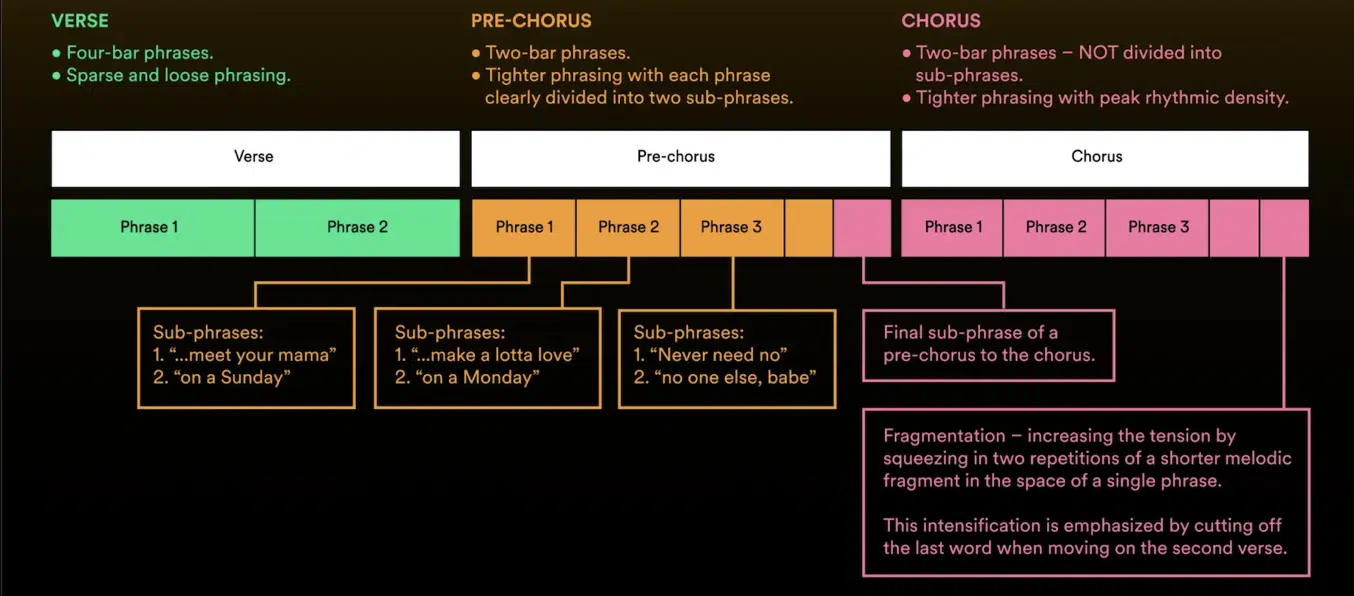
Verses are where you tell the story and really set the scene with lyrics that change each time, giving the listener new information or building on the overall theme.
Verses usually have either a more laid-back or intricate vibe compared to the chorus.
They’re like the part of a rollercoaster when you’re going up slowly, waiting for that big drop (in this case, the chorus).
In the verses, you can start simple, like just vocals and piano, then slowly add drums, bass, or other instruments to build tension and keep things moving toward the chorus.
For example, start your verses with minimal production (just a vocal and a soft pad or light guitar) and gradually layer in new elements like hi-hats or subtle synth textures.
This will create that much-anticipated build-up that people go crazy for.
A great trick is to use a melody in the verses that’s catchy but not too bold, so when the chorus hits, it feels like a payoff with its hooky, repeatable lines.
You can switch up little details in the verses, like:
- Tweaking the drum patterns
- Adding background sounds
- Playing around with different effects
Anything to keep the listeners from getting bored without stealing the spotlight from the chorus (teamwork makes the dream work, as I like to say).
Also, there’s nothing wrong with sneaking in small instrumental motifs or riffs in the verses that hint at what’s coming in the chorus.
It’ll create a sense of anticipation and tension when people listen.
Verses give you the space to play around and explore the song’s ideas 一 setting the stage perfectly for when the chorus comes in to drive the main message home.
Balancing the back-and-forth between the verses and chorus is what makes a song extra dynamic and keeps listeners engaged from start to finish.
-
Chorus vs. Bridge

The bridge is another unique section that traditionally comes after the second chorus, giving people a fresh perspective before returning to that familiar hook.
Unlike the verses and the chorus, the bridge includes new:
- New phrases
- New chord progressions
- Sometimes even a shift in rhythm
You can use the bridge to introduce a new melody or a different instrumental texture that stands apart from the entire rest of the song.
For example, if your song has been upbeat and driving, the bridge could suddenly pull back with a slower, more reflective vibe.
Or you could throw in a string section, a synth pad, or a guitar solo that contrasts with the established sound 一 whatever makes sense in the moment.
This section is your chance to throw in different lyrics that offer a new angle on the song’s theme, or even a key change that lifts the entire feel of the track for a moment.
To enhance this, try using effects like a filter sweep or a sudden drop in energy, then build it back up to transition smoothly into the final chorus.
NOTE: Another great technique is to play around with a completely different rhythm or groove, like switching from a straight beat to something syncopated or halftime.
It not only adds variety to the song’s structure but also makes the return of the chorus feel more powerful and satisfying, giving the audience a sense of resolution.
-
Chorus vs. Pre-Chorus
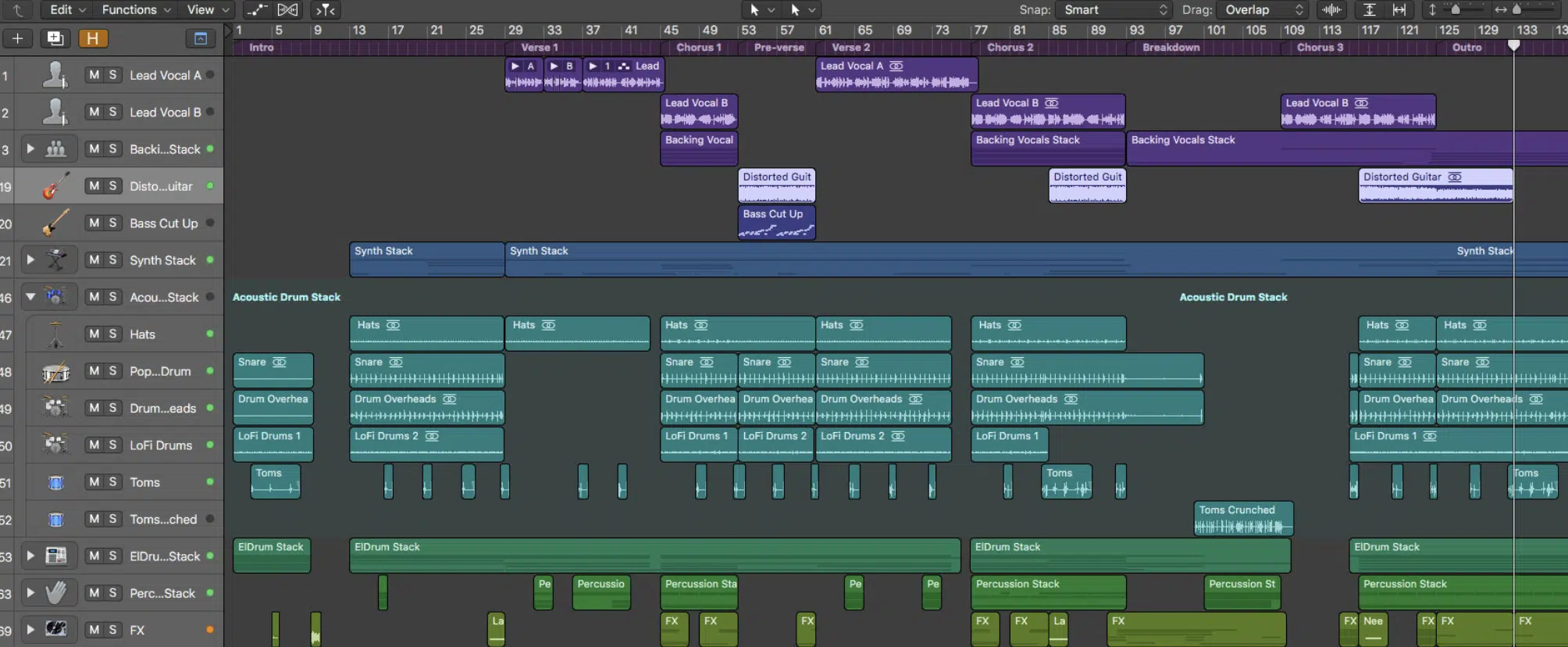
The pre-chorus is the link between your song’s verse and the chorus, and is all about building anticipation and setting the stage for the main event.
It usually has its own distinct melody and rhythm with a sense of rising tension that naturally leads into the high energy of the chorus.
For most songwriters, the pre-chorus is a great place to introduce slight variations in the song’s chord progression or melodic line.
You might go from a minor chord to a major one, or add a dissonant chord that feels unresolved, anything to really add to the ride (anything to keep their attention).
In terms of production certain things can help intensify the pre-chorus, like:
- Adding elements like a subtle riser
- Increasing percussion
- Layering backing vocals
This makes the transition to the song’s chorus feel even more impactful.
Unlike the chorus (which repeats the same music and lyrics) the pre-chorus offers a moment of change.
It’s an opportunity to highlight different lyrics or play around with dynamics even more.
Many songs use the pre-chorus to signal that something big is about to happen, creating a smooth, exciting buildup that keeps the listener hooked.
NOTE: Experimenting with volume swells, crescendo effects, or even a brief pause right before the chorus hits can make this section even more effective.
Anything to enhance the overall flow and emotional impact of your song is highly encouraged.
Writing Lyrics for Your Chorus

Writing lyrics for your chorus is all about capturing the main message of your song in the most enticing way possible.
Unlike verses, which can be more narrative and detailed, the chorus focuses on repetition and simplicity to make the words stick.
Start by really connecting to that catchy hook, which could be a powerful phrase or a simple line that repeats and makes people get hyped up.
Or, really tug on their heartstrings if you’re aiming for a sadder vibe.
Use repeated lyrics (like “We’re unstoppable” or “I miss you”) to emphasize the key emotion or idea 一 ensuring that it feels like the main message of your song.
Don’t be afraid to use the same chord progression that you introduced earlier in the song because keeping the musical elements familiar allows your lyrics to shine through.
To make your chorus lyrics pop even more, try to add slight variations in the second chorus like changing a word of the bar, flipping a line, adding new backing vocals, etc.
Remember, a memorable chorus often uses relatable, direct language that listeners can easily connect with, so keep your lines concise yet impactful.
With the way people’s attention spans are today, it’s all about keeping your lines concise yet impactful, because otherwise, you’ll lose their attention.
Melodic Elements of a Chorus
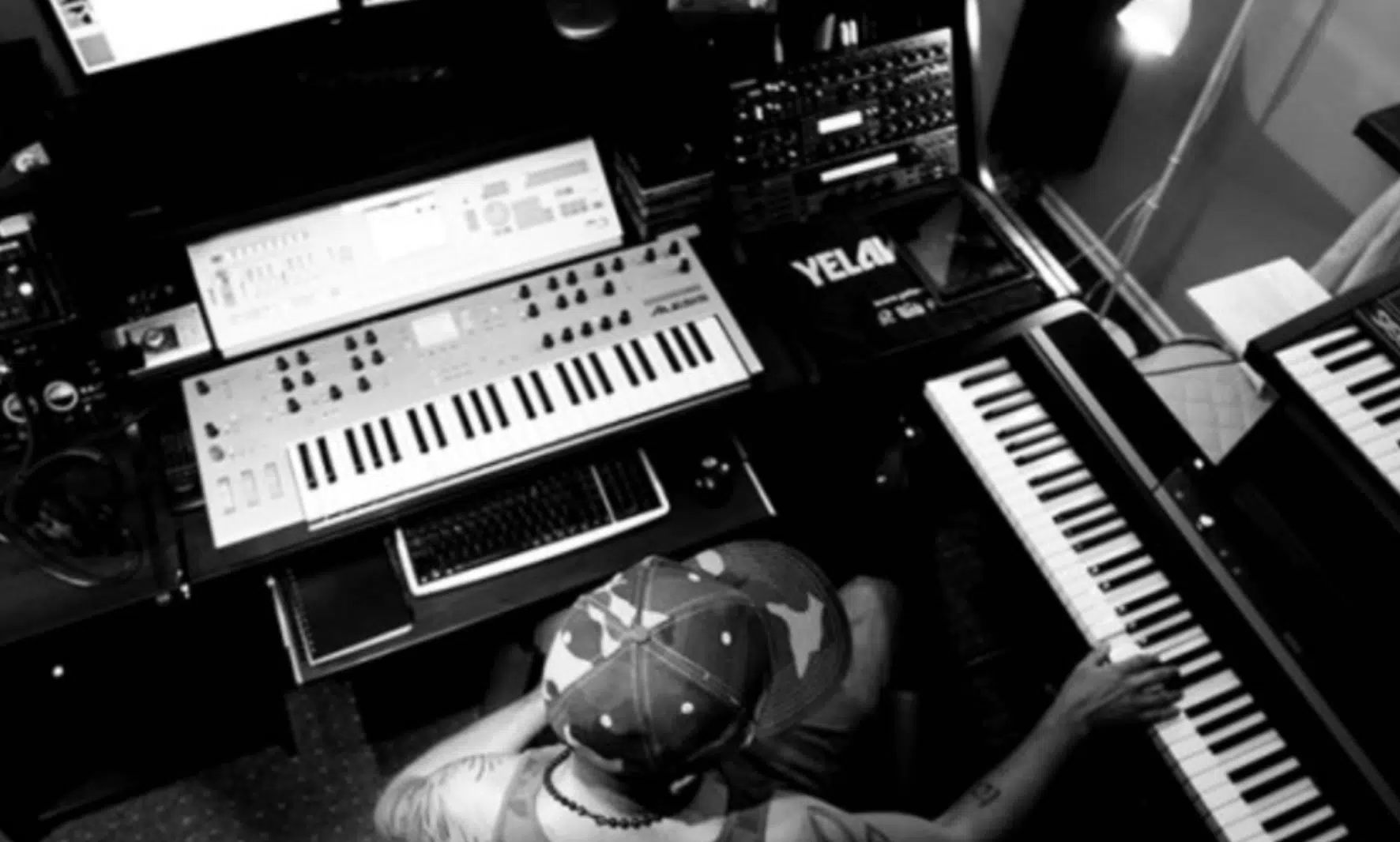
When you’re learning about what is a chorus in a song, you have to be aware that the melody is an invaluable piece of the puzzle.
It’s what helps make your chorus addicting because people just can’t help but hum it way after the song ends (which is what you want).
To create a strong melodic element in your chorus, start with simple, repeatable phrases that feel natural/intriguing and make sure it contrasts with the verses…
For example, if the verses are sung in a lower range, try bumping up the chorus melody to a higher pitch to create that “lift” that makes the section pop.
You can build your melody around the most emotional part of your lyrics, like letting the melody rise when you’re expressing something hopeful.
Or, drop when the mood is more reflective and sad.
Just remember it should match the feeling of your words, or if you’re producing it, it should tell a natural story that the artist can easily lay down lyrics over.
Layering melodies is also a powerful tool, so try:
- Doubling your main melody with an octave above or below
- Adding harmonies
- Having a counter-melody playing in the background
Also, don’t be afraid to play with rhythmic variation too.
Sometimes a slight pause, syncopation, or unexpected beat in the melody can turn a good hook into a great one that surprises the listener and keeps them hooked.
Experimenting with these melodic elements is key to finding that perfect blend of catchy and meaningful 一 making your chorus the highlight that everyone remembers.
The Impact of Chord Progressions in a Chorus
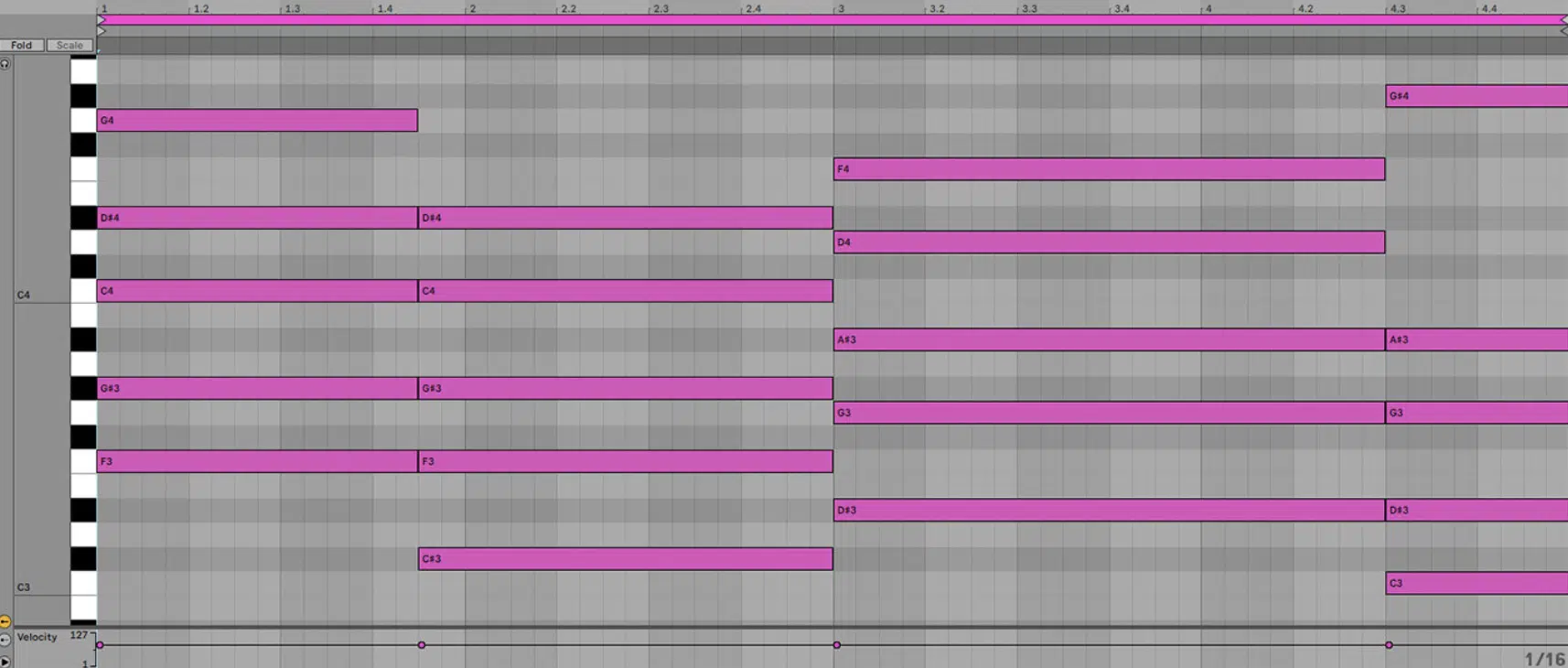
Future Bass Chord Progression
Chord progressions are what really set the mood of a chorus and give it the emotional feel that people can get lost in.
The right chord progressions can turn a simple melody into something powerful, making your song’s chorus feel uplifting, emotional, or even a little edgy.
It all depends on the chords you choose, of course.
For example, classic chord progressions like I–V–vi–IV are super popular in pop music because they’re catchy and instantly connect with listeners.
If you want your chorus to stand out, try mixing things up with unexpected chord progressions, like swapping in a minor chord.
Or, using a descending sequence to add some tension and release.
Producers often layer the chord progressions with different sounds, like adding a soft synth or strumming guitars, to make the harmony feel fuller and more dynamic.
Playing around with extended chords, such as seventh or ninth chords, can also add a layer of appeal to the chorus without overcomplicating the hook.
Remember, chord progressions aren’t just there to support the melody….
They help shape the whole feel of the chorus and help make it the part that sticks with your audience throughout the whole song.
So, don’t be afraid to experiment with different chord progressions until you find the one that really makes your chorus interesting and fits the vibe perfectly.
Advanced Techniques for Enhancing Your Chorus
Understanding “what is a chorus in a song” goes beyond just writing catchy hooks or perfecting your song’s structure; it involves advanced techniques that elevate the overall impact. So, let’s break down some advanced songwriting/production techniques to make sure you always have a catchy chorus that will be sung for years to come.
-
Modulation
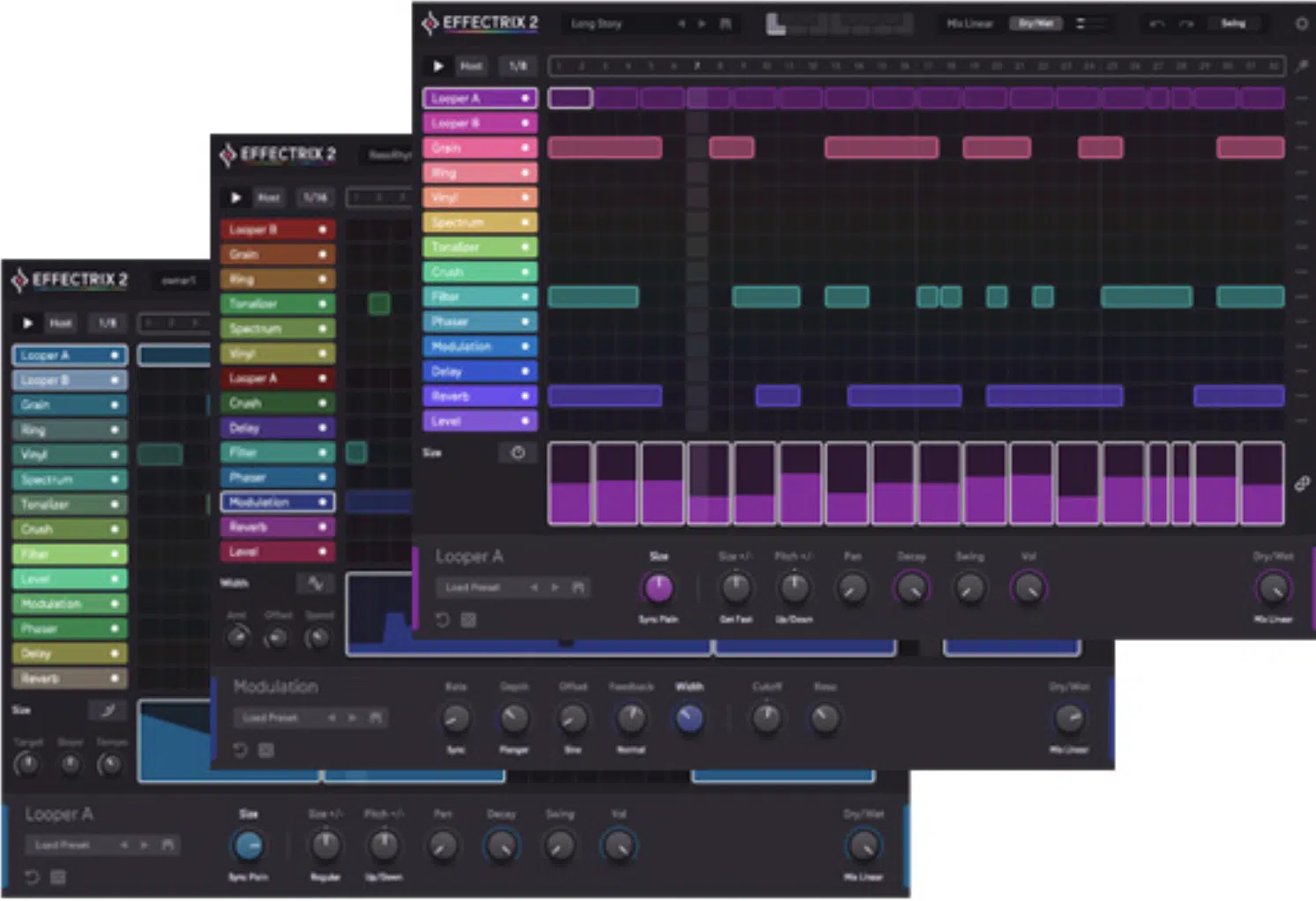
If you listen, you’ll hear that modulation can dramatically change the mood and impact of a song’s chorus because it brings a new level of emotion to the table.
You can try shifting the key up by a half step or whole step during the final chorus to create a sense of extra excitement so, when people hear it, they’re hooked.
This key change can be subtle or dramatic, depending on how you execute it…
Gradually building into the modulation with a riser effect or transitioning smoothly using a chord progression that naturally leads to the new key is ideal.
You can use modulation to break that basic, boring monotony of this repeated section to give the listener something to grasp onto each time.
NOTE: It’s super important to make sure the modulation feels intentional and not forced, so take time to practice transitioning between keys smoothly to avoid jarring the listener
Side note, if you want to learn all about music theory (like half-steps, whole steps, etc), then we’ve got you covered.
-
Changes in Melody

Throwing in some sick changes in melody within the chorus section can add variety without losing the core essence of the hook, which is key.
When the first chorus begins, keep the primary melody consistent (to get it stuck in your listener’s head the second they hear it), then introduce slight variations in later repetitions, like:
- Altering the rhythm
- Adding extra notes
- Shifting the melody to a higher octave
You can even use harmonies or countermelodies to give the illusion of change while still maintaining the foundational melody of the chorus.
This is very popular in pop songs, by the way, so if that’s your genre, try it out.
For a more innovative/dynamic approach, try dropping out certain melodic elements momentarily and bringing them back in even stronger.
For example, you could mute the bassline or lower harmony during the first half of the chorus, creating a stripped-down feel.
Then, reintroduce it with a bold glide or pitch bend effect to create a sense of surprise and renewal that breathes some new life into your chorus.
NOTE: Melodic shifts are super effective when paired with lyrical changes because it adds layers of emotion and depth to the chorus.
It’ll make sure your song’s chorus is fresh, engaging, and not basic/boring 一 each repeat will feel like a unique experience while still tying back to the main theme.
-
Dynamic Shifts
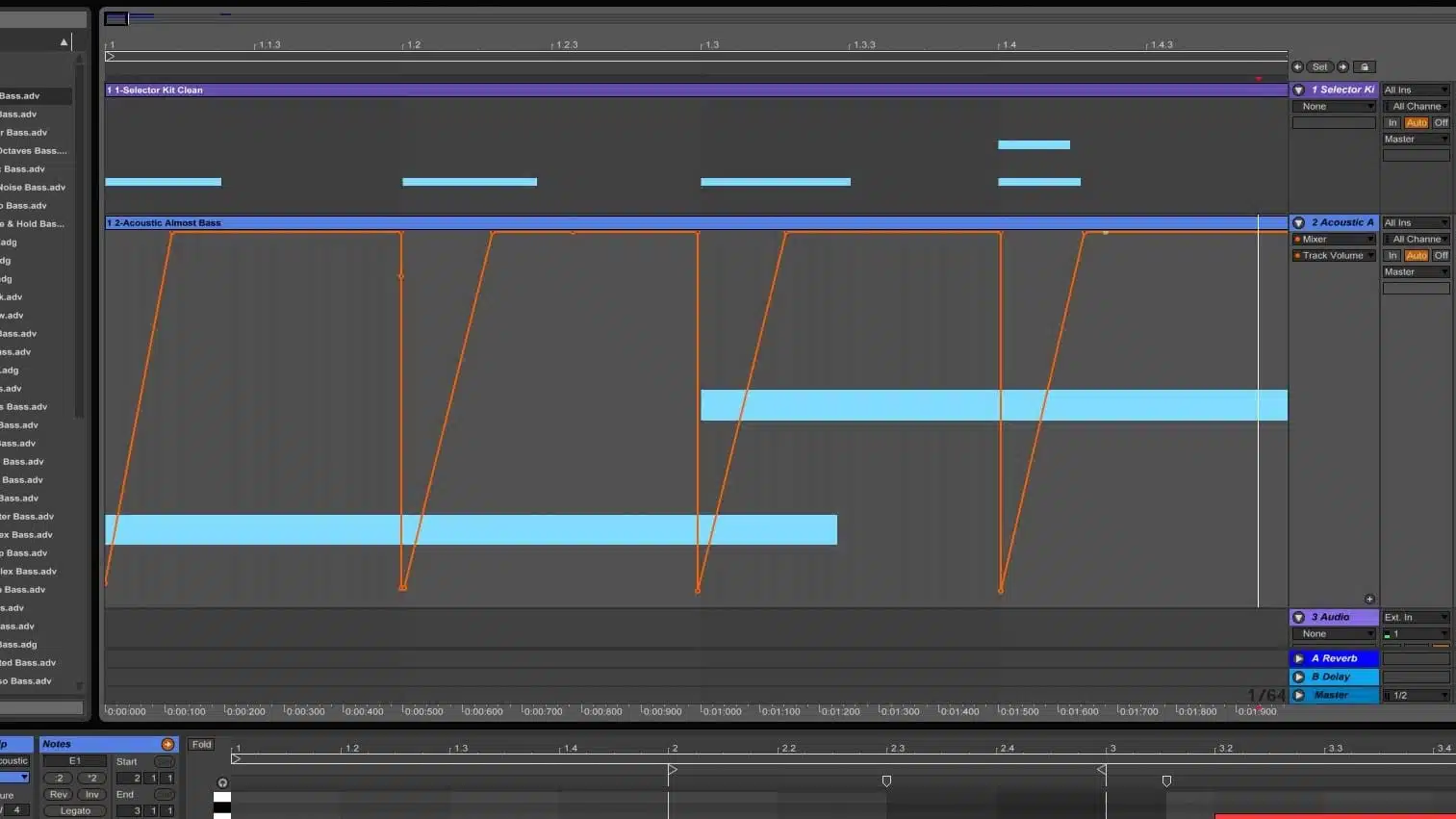
When you’re learning what is a chorus in a song, keep the words “dynamic shifts” in mind because they’re essential for keeping things exciting.
They’ll help you control the song’s energy and emotional impact.
You can try alternating between quieter and louder dynamics within the chorus itself, such as pulling back the instrumentation during certain lines to spotlight the vocals before ramping up to full power.
Also, you can use automation to gradually increase the volume or introduce effects like reverb swells that can add intensity and depth.
Maybe you could just do it for one chorus to add that extra edge where the lead singer can really get crazy…
For example, you could start with a stripped-back version of the good chorus and then explode into a fuller sound with added layers.
Dynamic shifts don’t just make the chorus stand out 一 they also provide a sense of movement and progression.
Remember you want to create interest and make a great first impression, so when people hear it, their minds can’t help but love it.
Pro Tip: Incorporating Instrumental and Vocal Variations
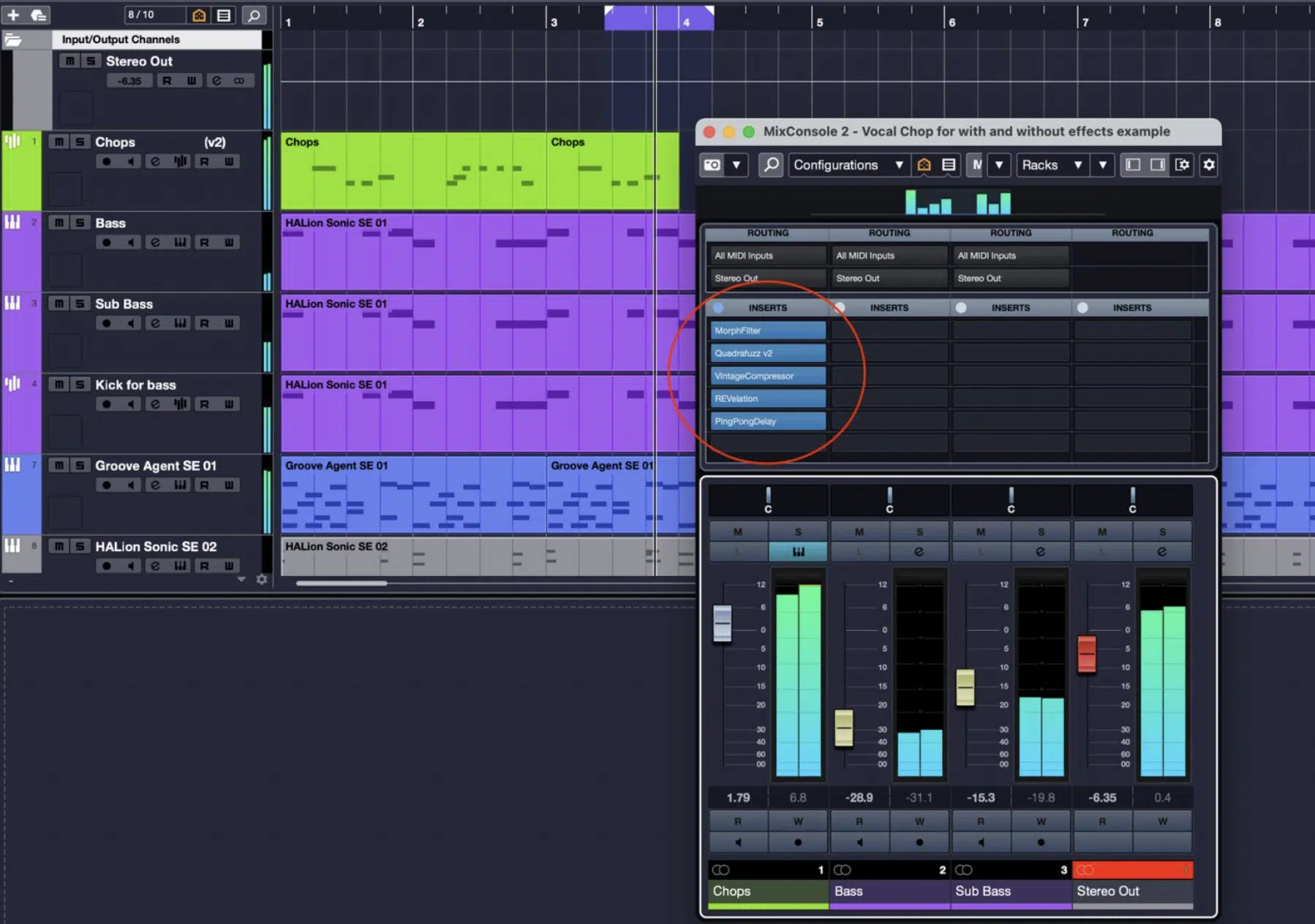
Incorporating instrumental and vocal variations is a great way to keep the song’s chorus feeling dynamic and engaging throughout the song.
Play around with adding new instrumental layers, such as a counter-melody on a synth or a subtle guitar riff that complements the main melody like we touched upon earlier.
This will give you a much more immersive soundscape.
Vocal variations that can bring more unique textures to the table can be achieved by:
- Layering harmonies
- Adding ad-libs
- Using vocal effects like distortion or pitch-shifting
A popular technique that most songs take advantage of is to double the lead vocal in certain parts of the chorus to give it more punch.
Or, use a call-and-response pattern between the lead and backing vocals for added complexity.
Muting certain instruments for a bar or two, then bringing them back in to create an ebb and flow that keeps the listener engaged is also a good one.
These subtle changes can make each catchy chorus feel slightly different, which is key when it comes to popular music.
It prevents the repetition from becoming too monotonous, while matching the vibe of your main idea which is great for any genre chorus (hip-hop, R&B, pop songs, etc.).
Bonus: Common Mistakes in Writing a Chorus
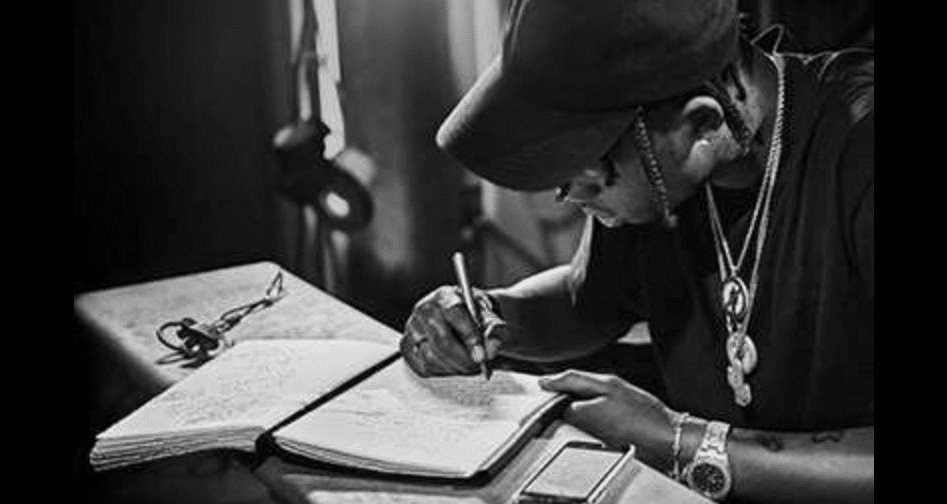
When writing a chorus, it’s easy to fall into certain traps that can undermine its impact, even if the melody or lyrics are strong.
But, if you’re going to learn what is a chorus in a song, you have to refrain from all of these bad habits.
#1. One common mistake is overcrowding the chorus with too many elements, which can overwhelm the listener and muddy the main hook.
#2. Keep the arrangement clean by focusing on the essential components (like the key melodic line and main chord progression) while using additional layers sparingly to enhance, not distract.
#3. Another pitfall is failing to differentiate the chorus enough from the song’s verse(s), leading to a lack of contrast that makes the whole song feel flat.
To avoid this, make sure the chorus introduces a noticeable shift in energy, whether through dynamics, instrumentation, or a change in rhythm like we talked about.
#4. Overusing the same lyrics without variation can also make the chorus section lose its appeal. So, try tweaking the lines slightly in later repetitions to keep the listener’s interest.
#5. Lastly, avoid writing a chorus that’s too complex 一 simplicity is often key to a memorable chorus.
Make sure to focus on creating a hook that’s easy to sing along with and sticks in the listener’s mind, just like you’d hear in popular music.
What is a Chorus in a Song? Final Thoughts
By now, you should have a solid understanding of what is a chorus in a song and how to make yours truly stand out.
From mastering song structure to experimenting with melodic variations and chord progressions, you’ll be able to create impactful choruses that really make an impact.
You’ve learned how to make your chorus shine as the highlight of your track 一 blending all the right elements to keep your audience hooked from start to finish.
To take everything you’ve learned even further and enhance your skills in general, make sure to download these legendary Free Project Files.
It comes packed with 3 professional-quality project files that break down exactly how to produce a song from start to finish, available for Ableton, FL Studio, and Logic Pro.
It’s the absolute best way to see how pro-level tracks are made, diving deep into the chorus, verses, and all the other elements of a song.
They’ll give you a real-world look at advanced production techniques, structure, and sound design so you can see exactly how to apply the methods we’ve covered today.
Best of all, they’re all created by top producers and sound designers and are 100% royalty-free, so there are no restrictions at all.
Now after this article about what is a chorus in a song and the Free Projects Files pack you’ll be able to knock out killer choruses that connect, engage, and sound professional.
Whether you’re a songwriter or producer, your tracks will always be perfectly structured.
Just remember to keep experimenting, learning, refining, and growing; it’s the key to staying ahead of the game in such a competitive field.
Until next time…







Leave a Reply
You must belogged in to post a comment.